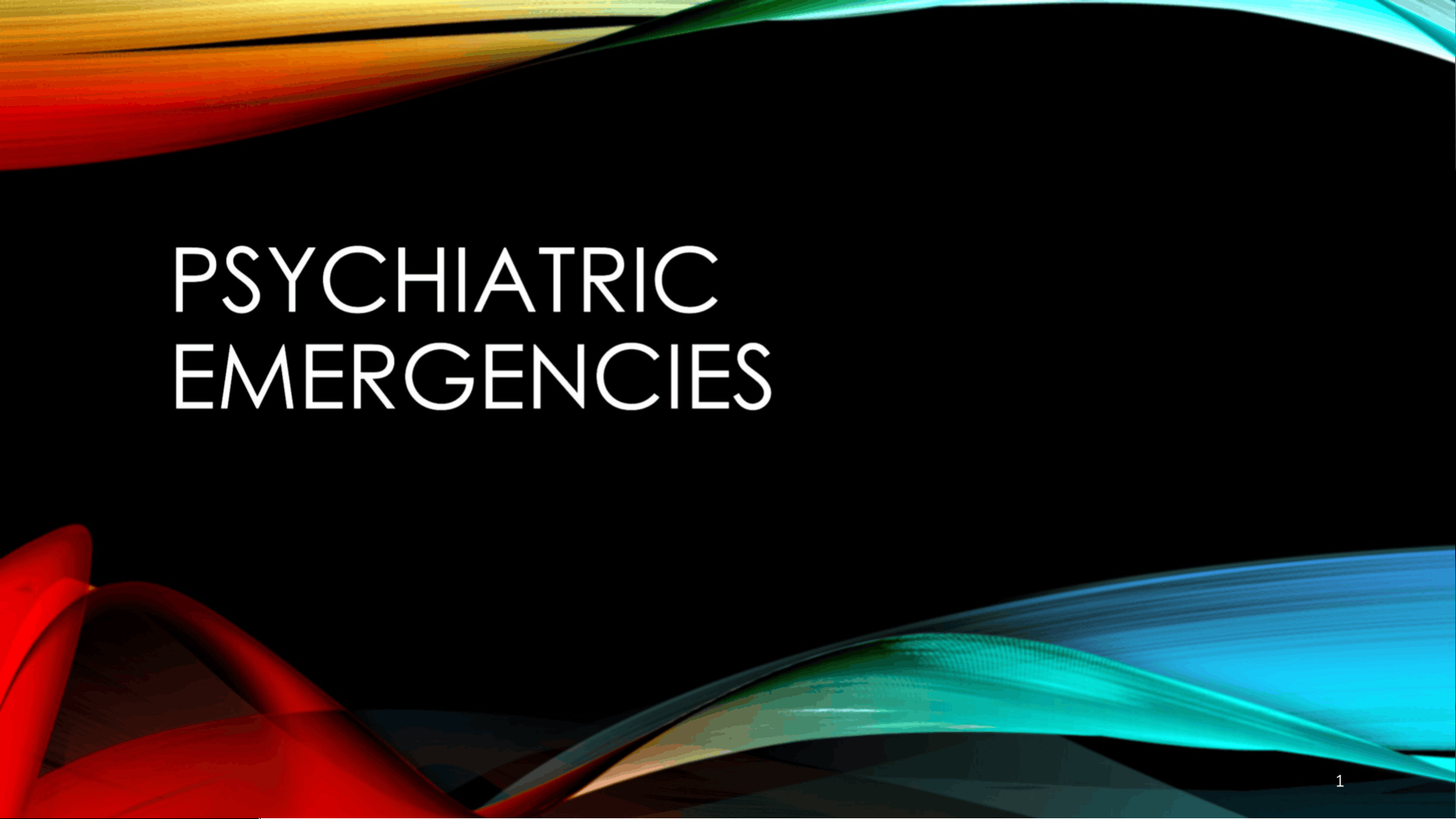
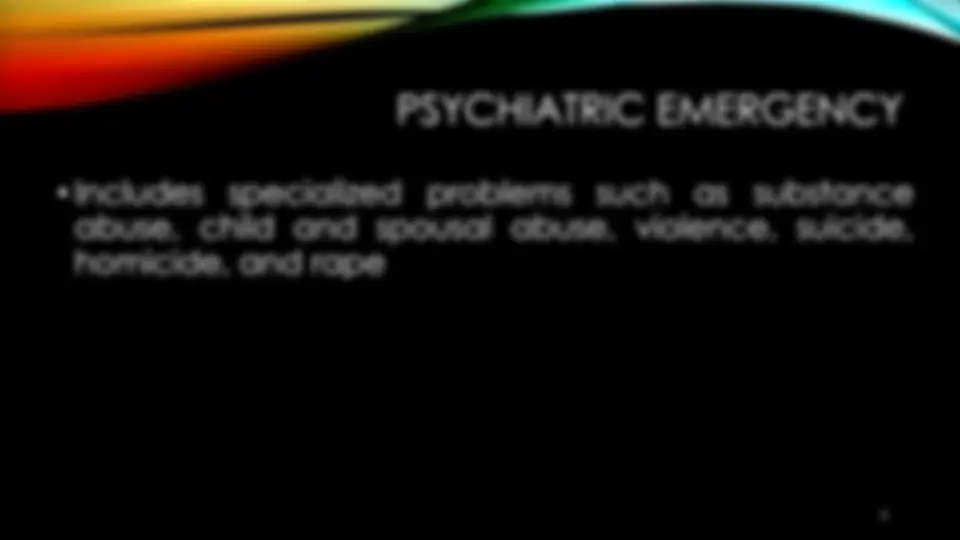
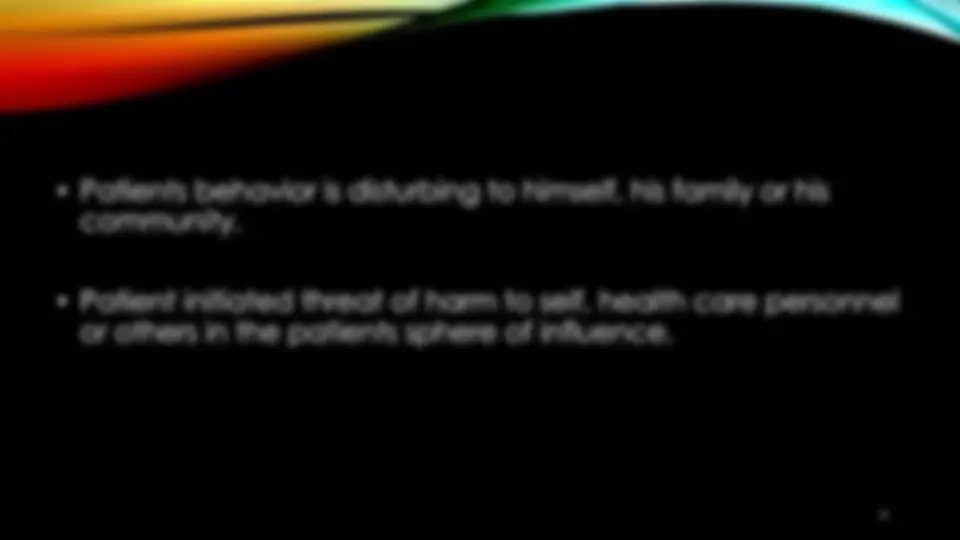

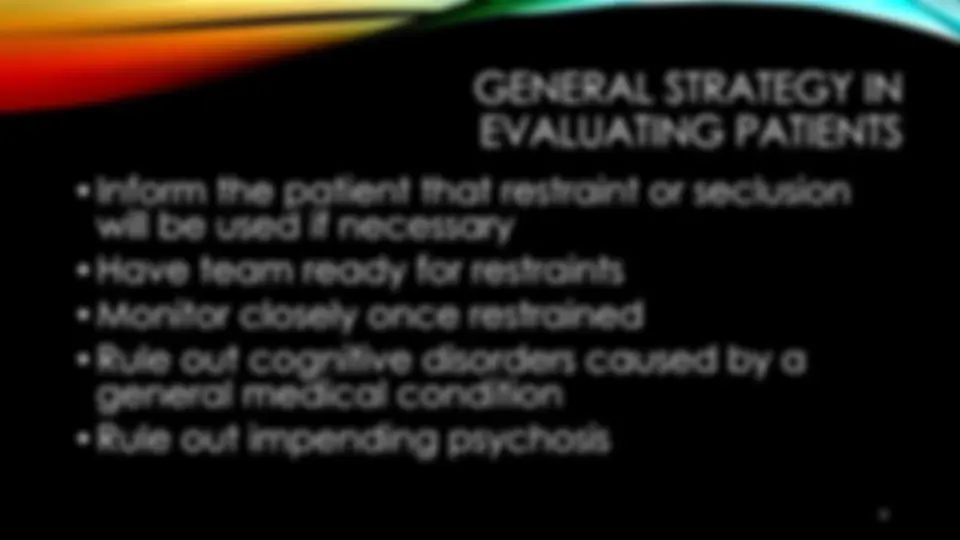
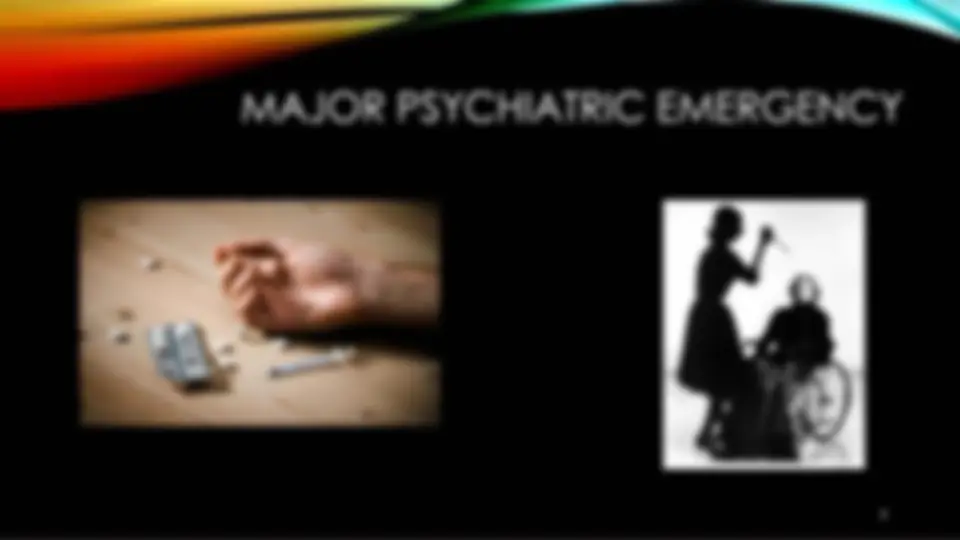
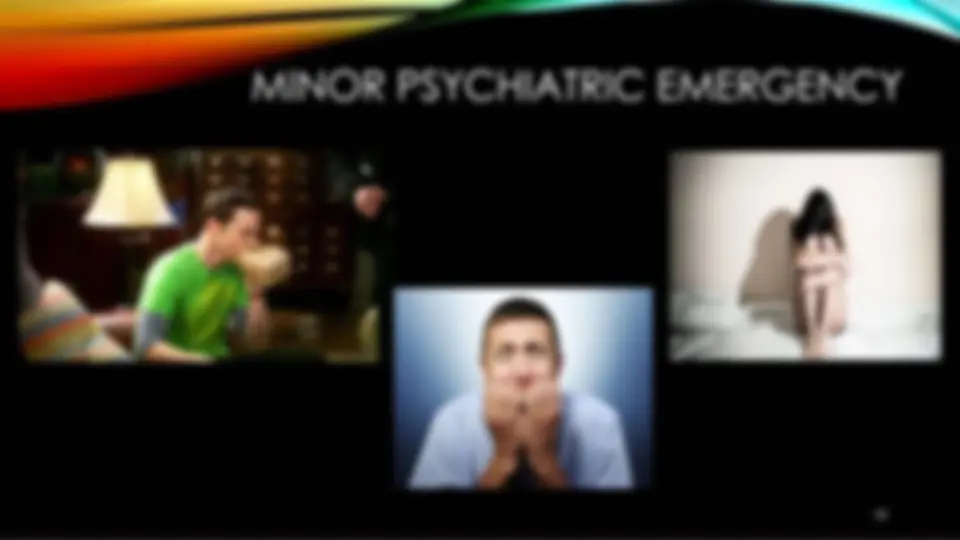
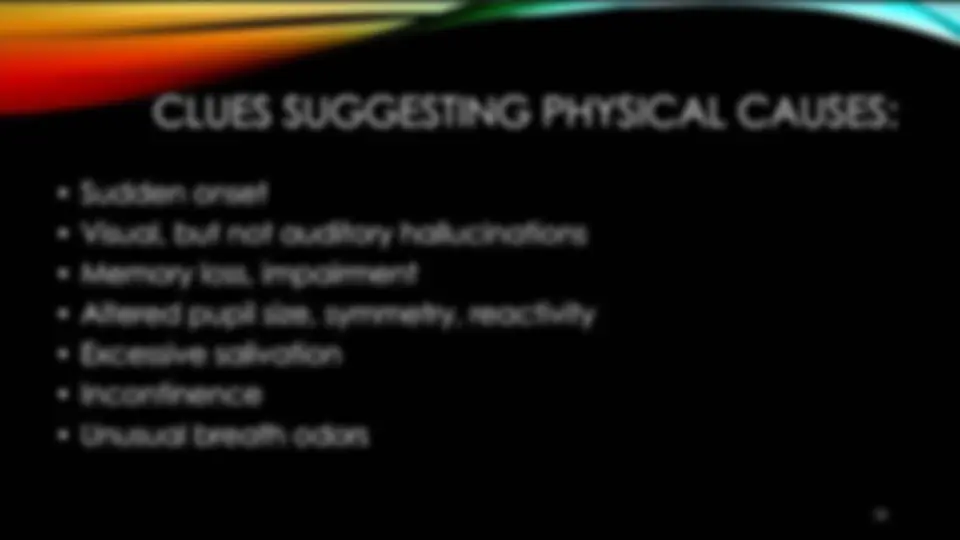
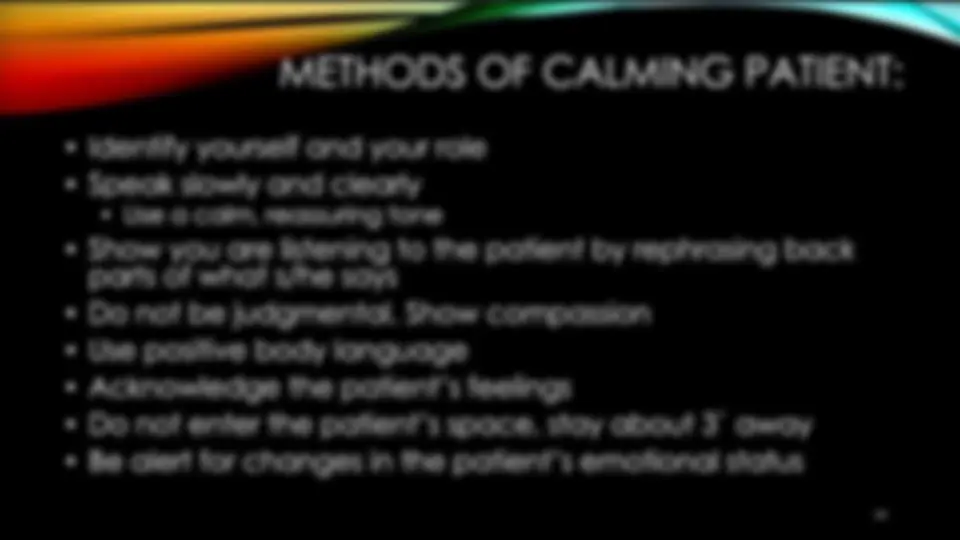
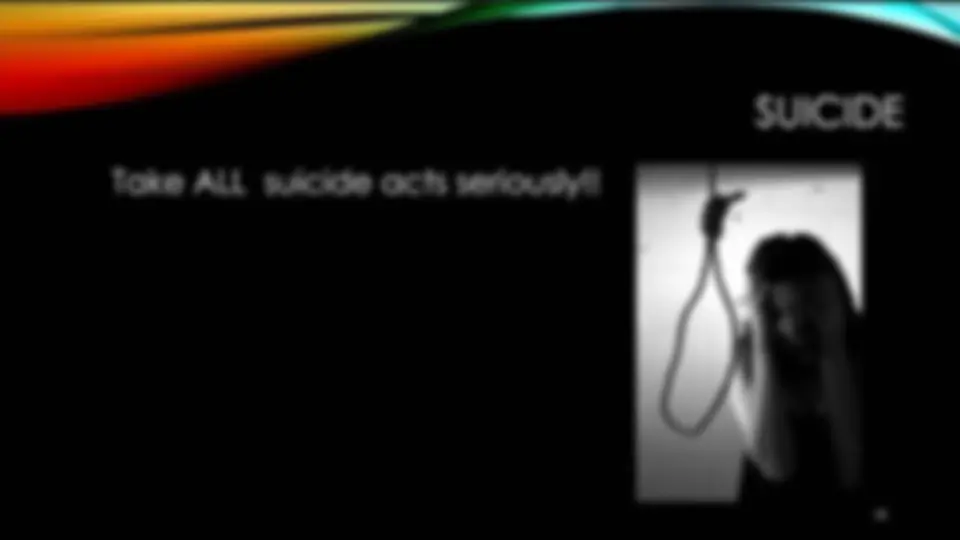
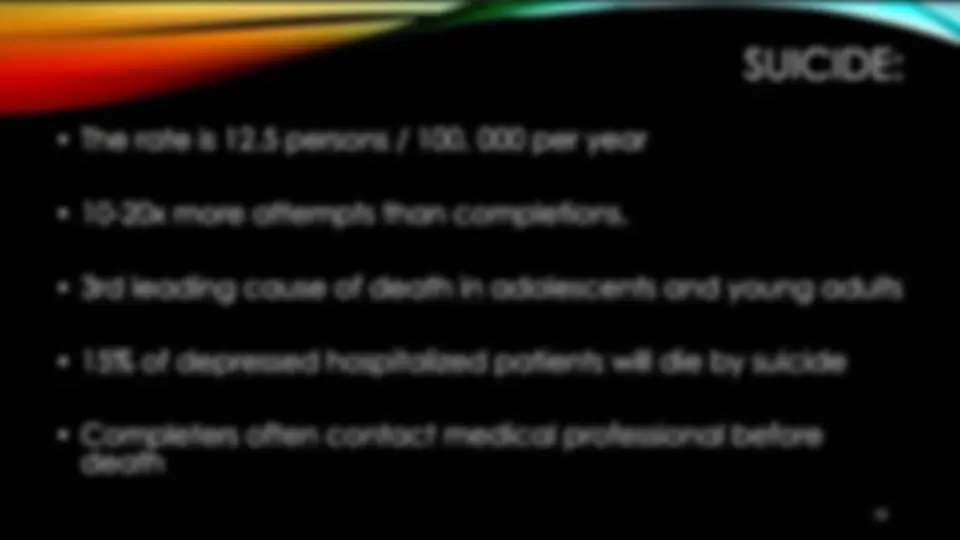
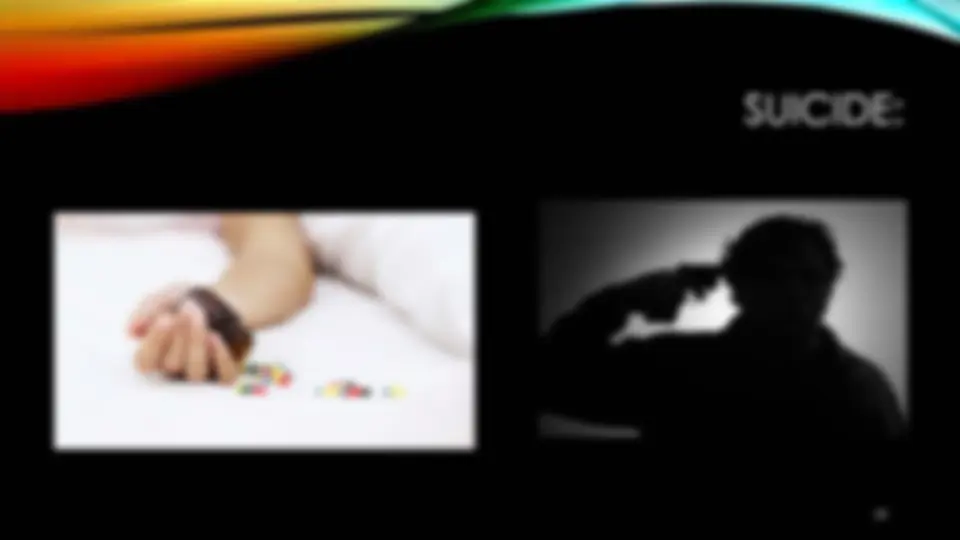
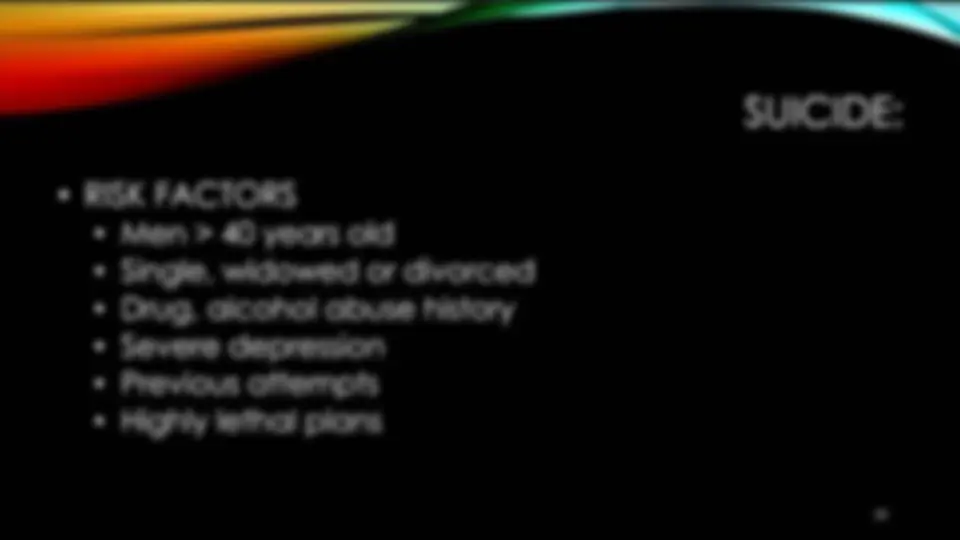
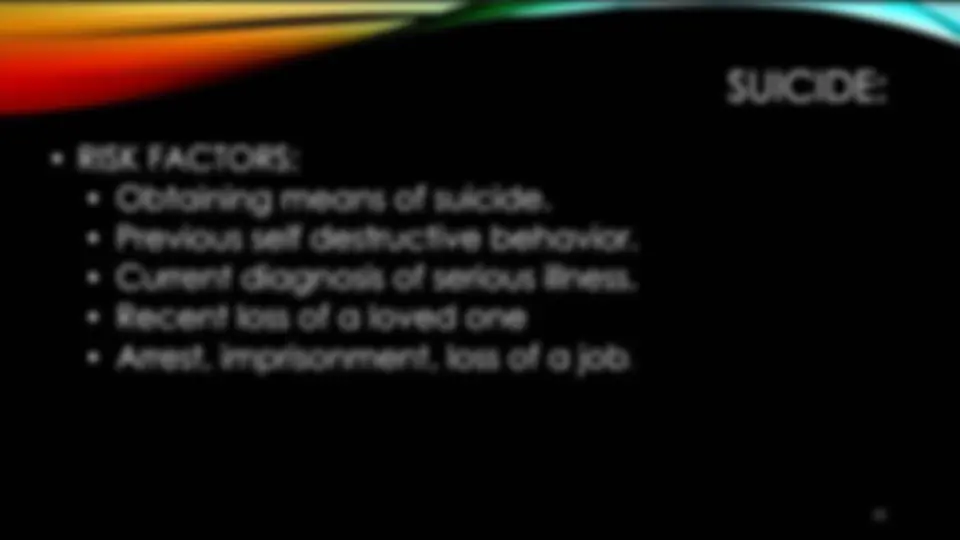

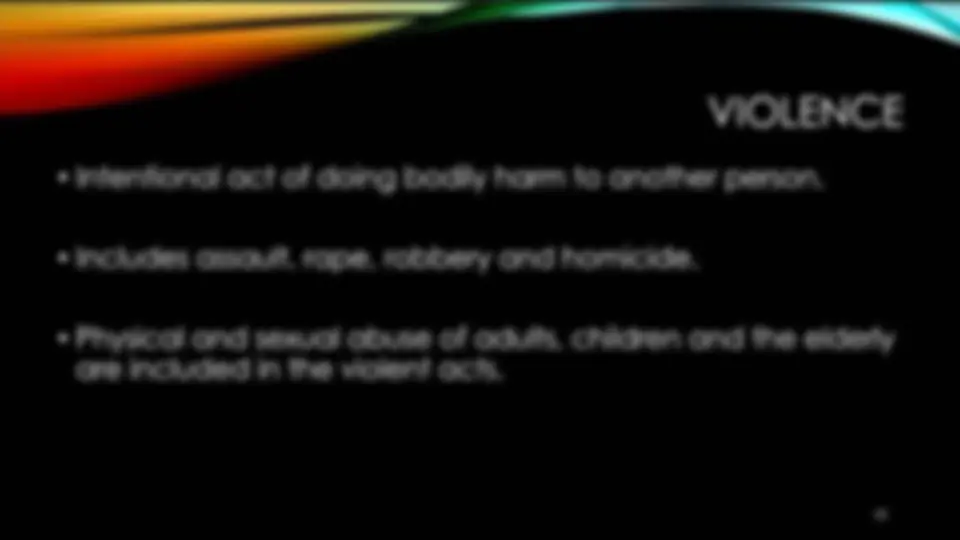
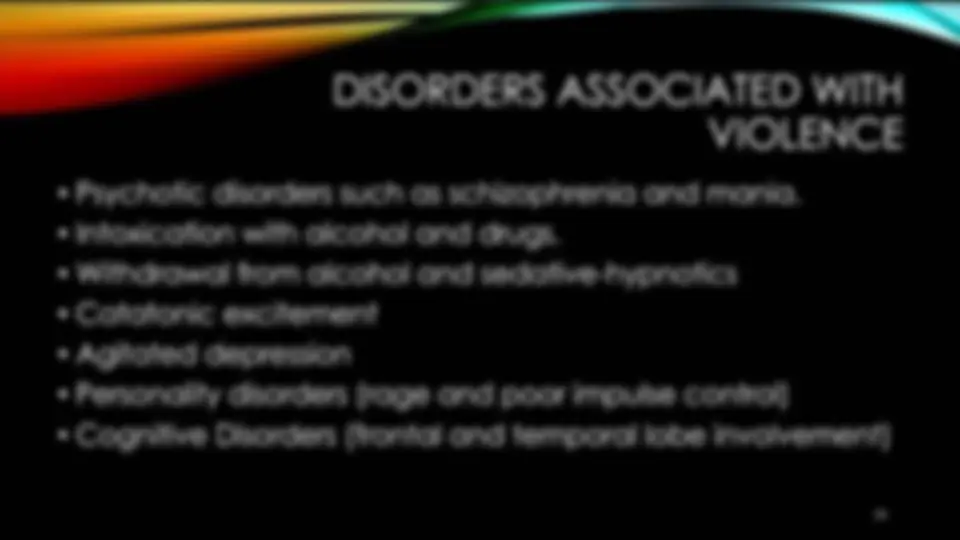
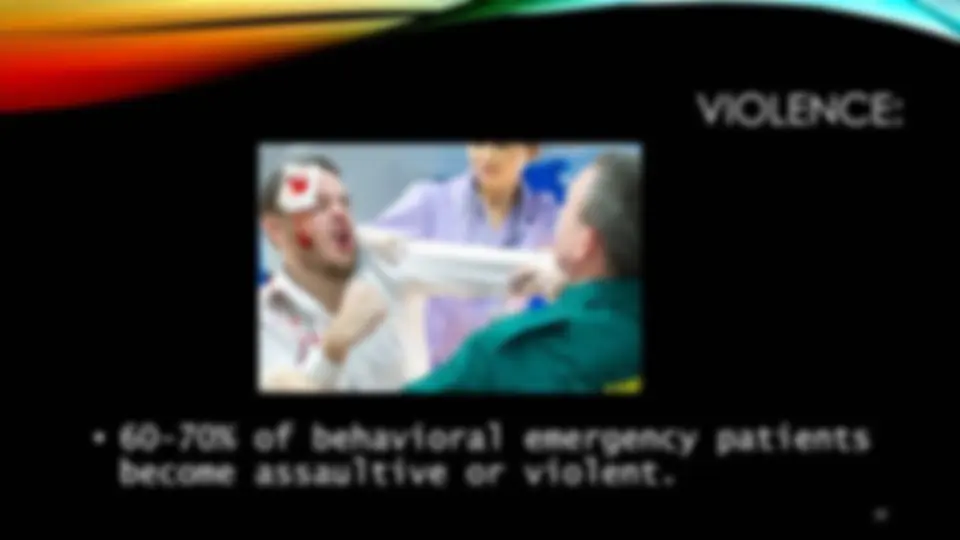
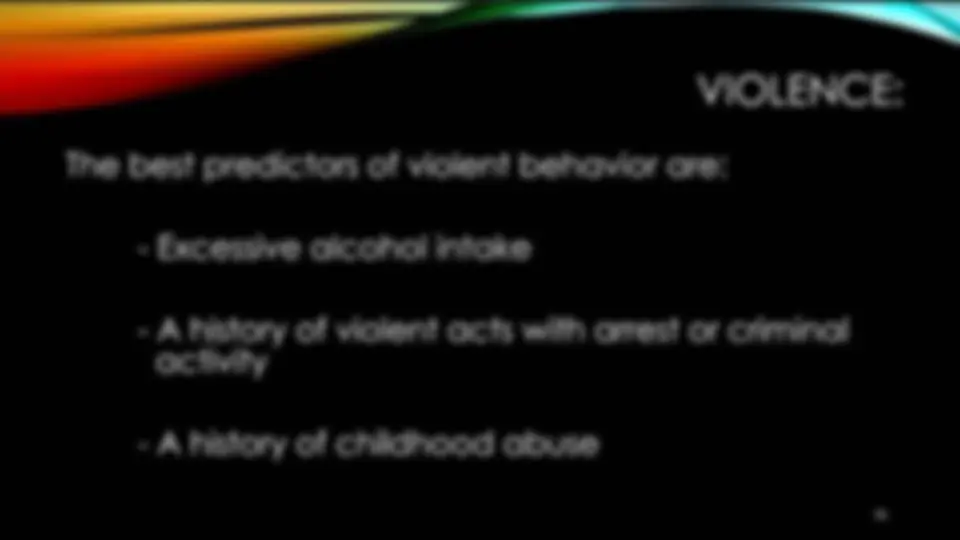
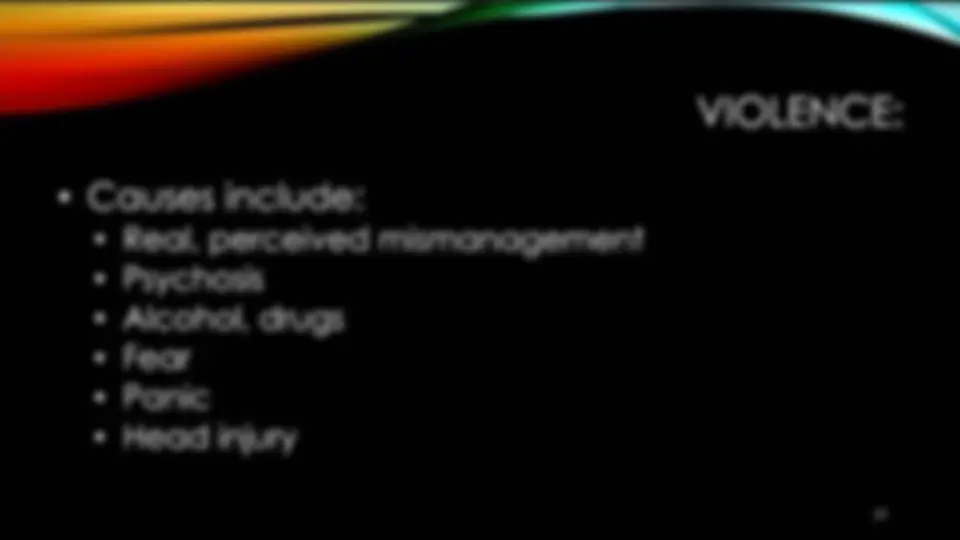

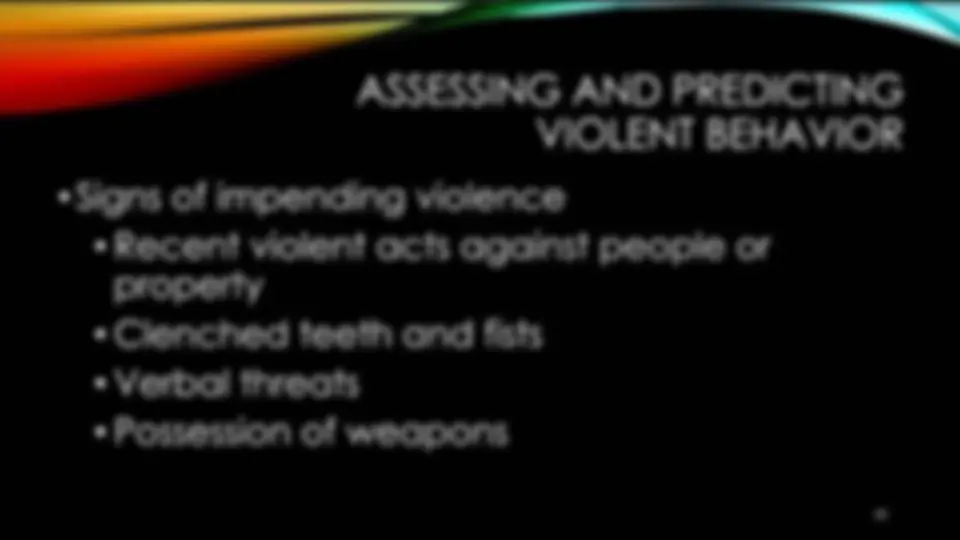
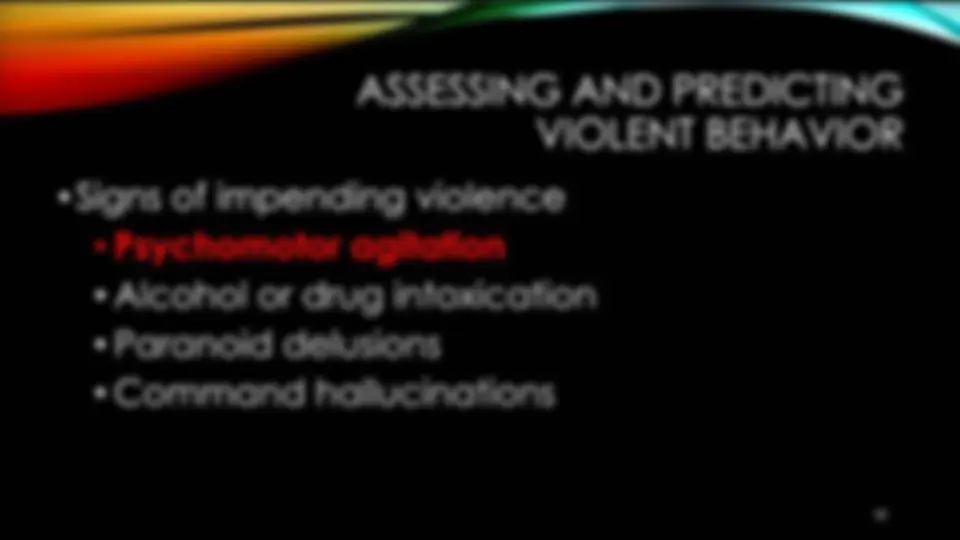
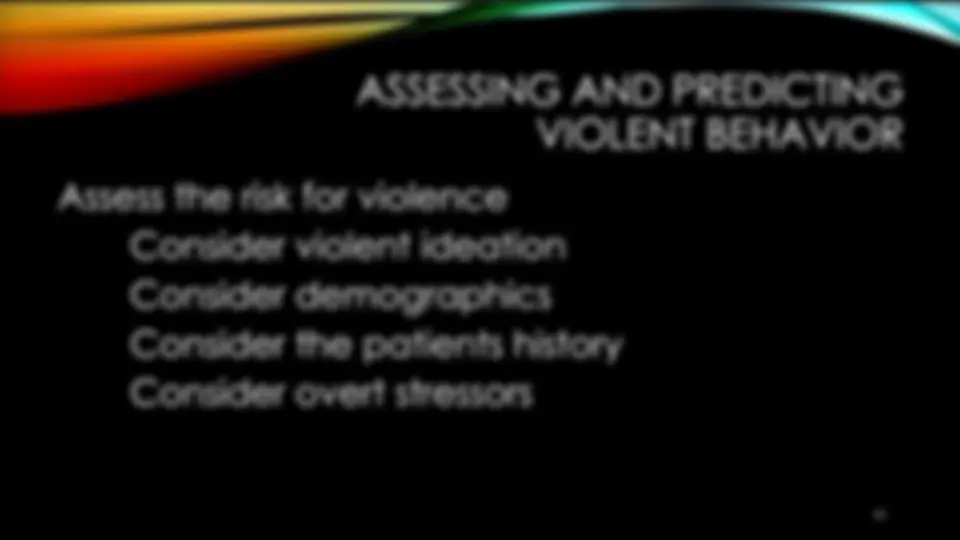
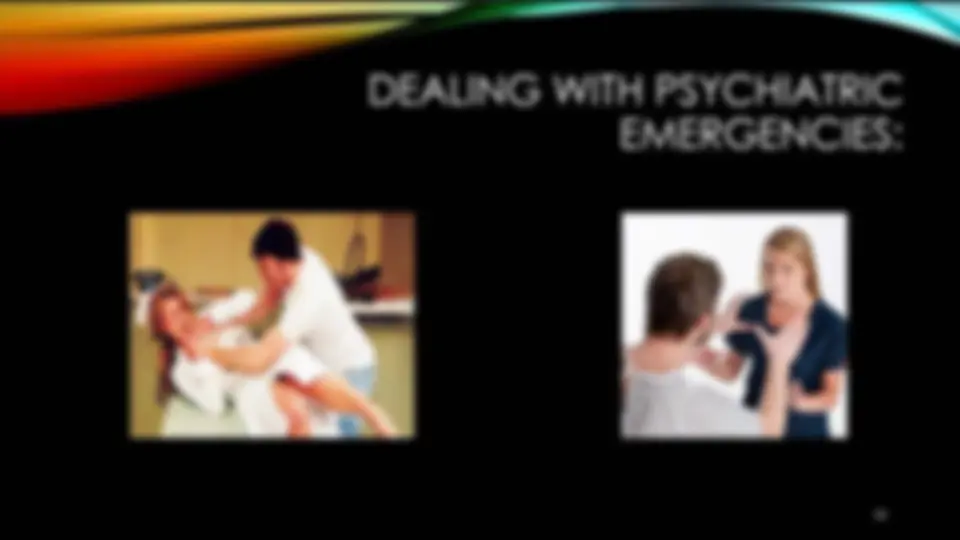
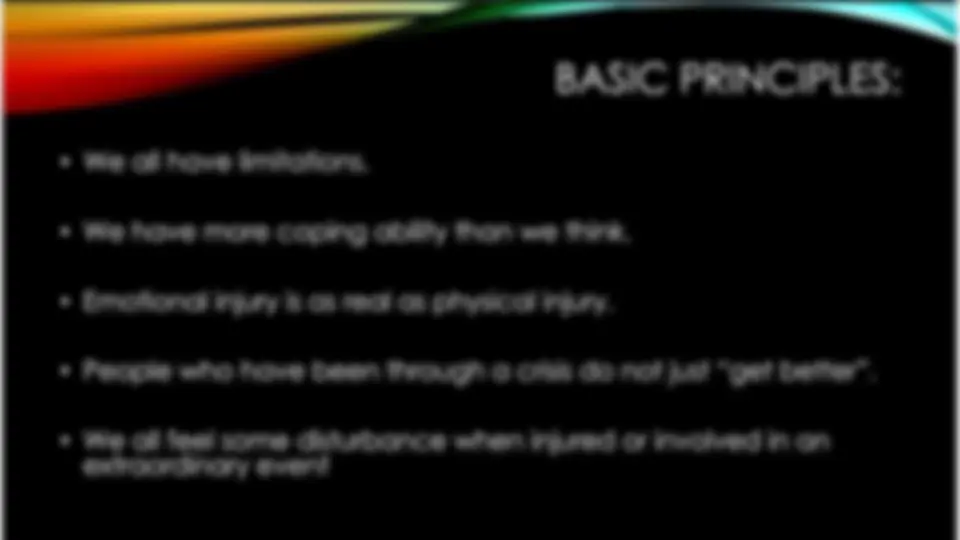




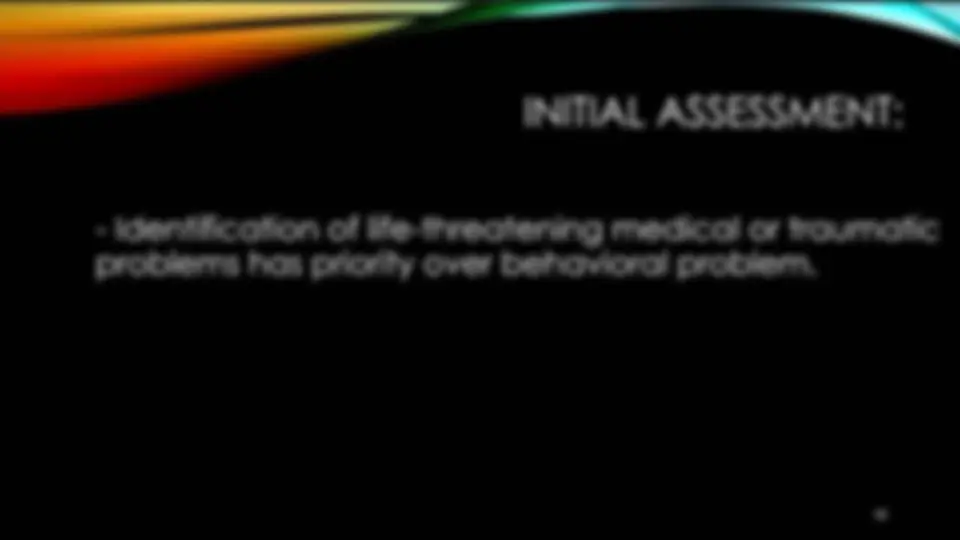
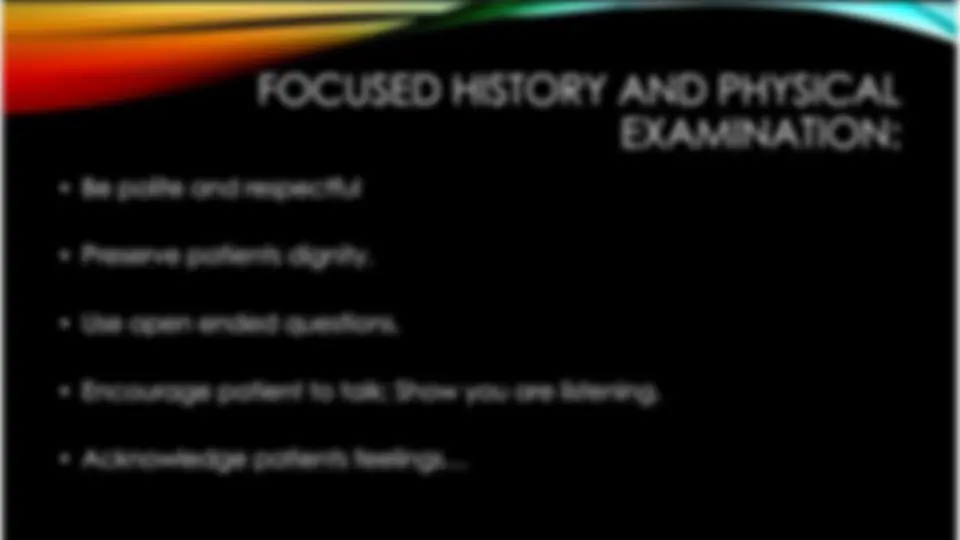
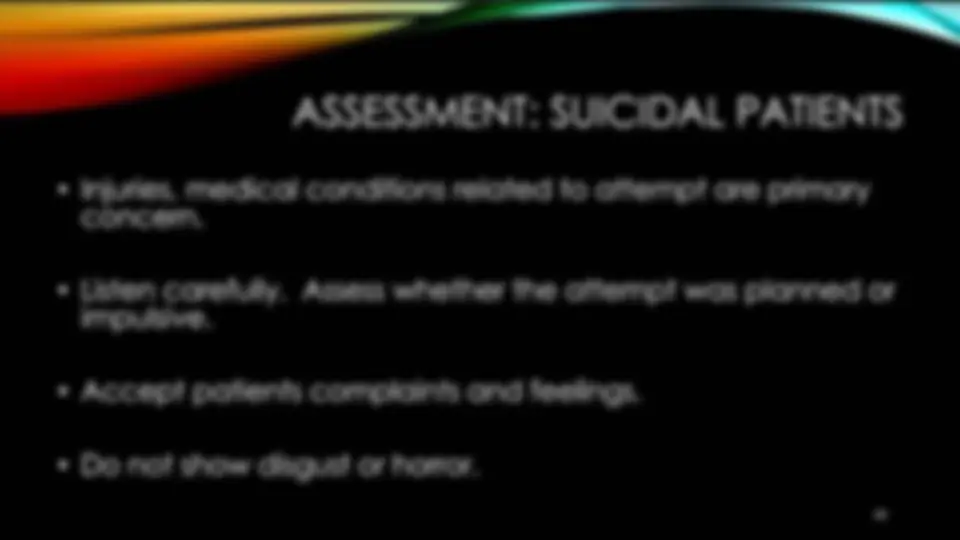
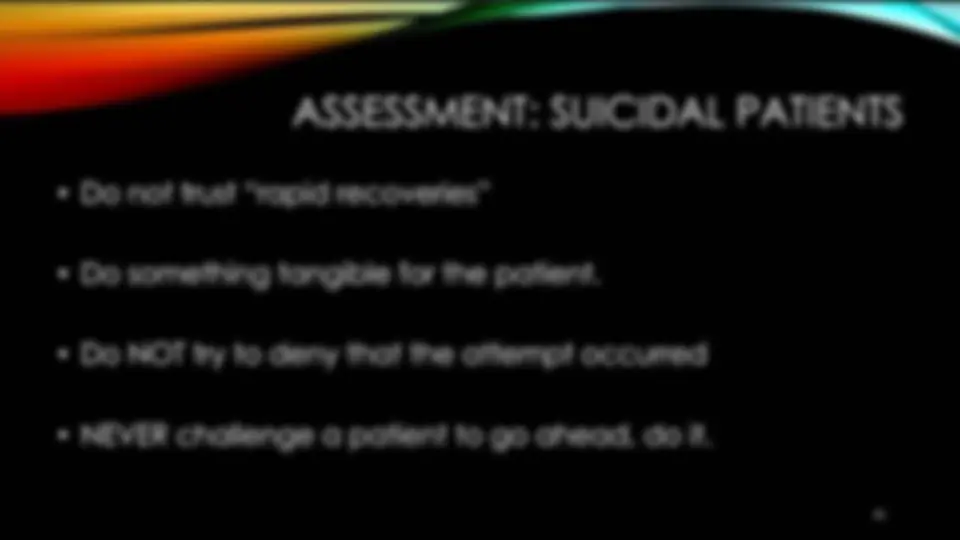
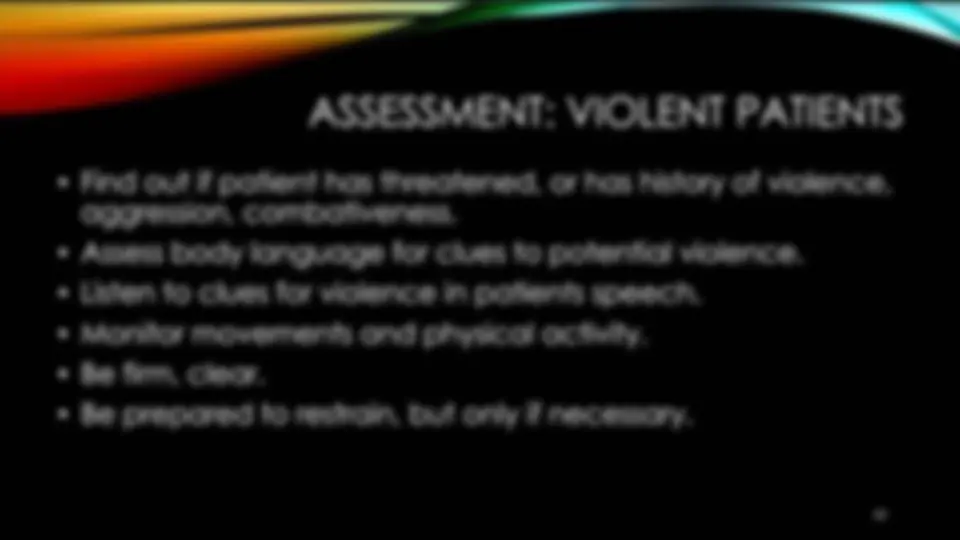
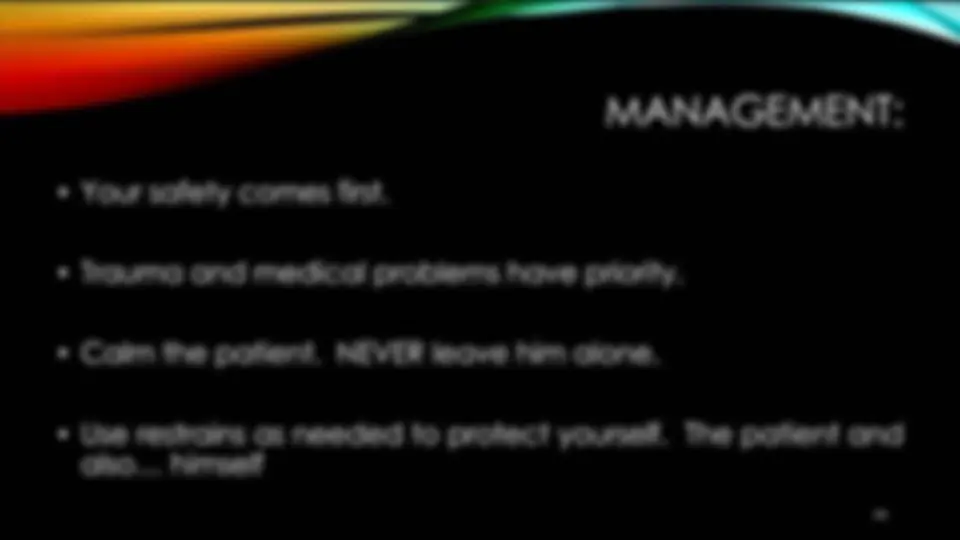
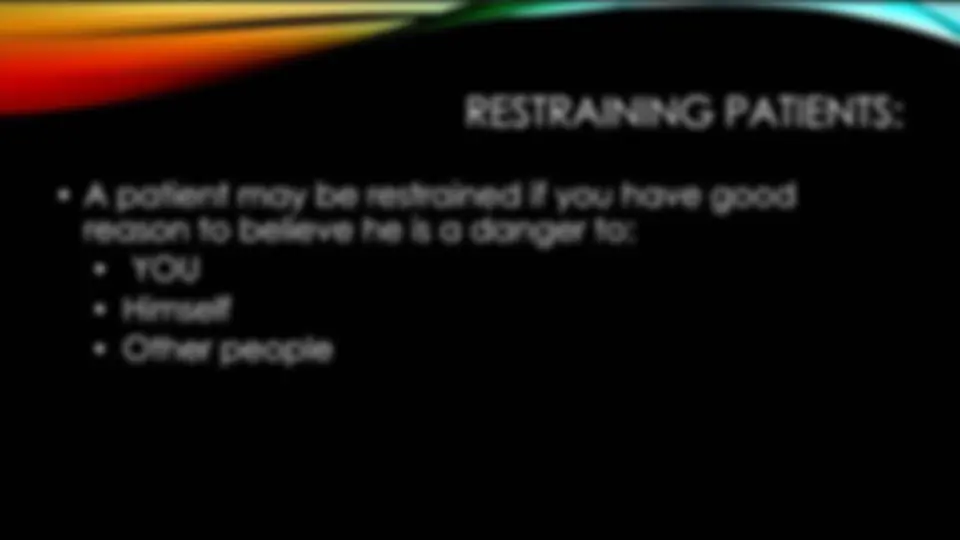
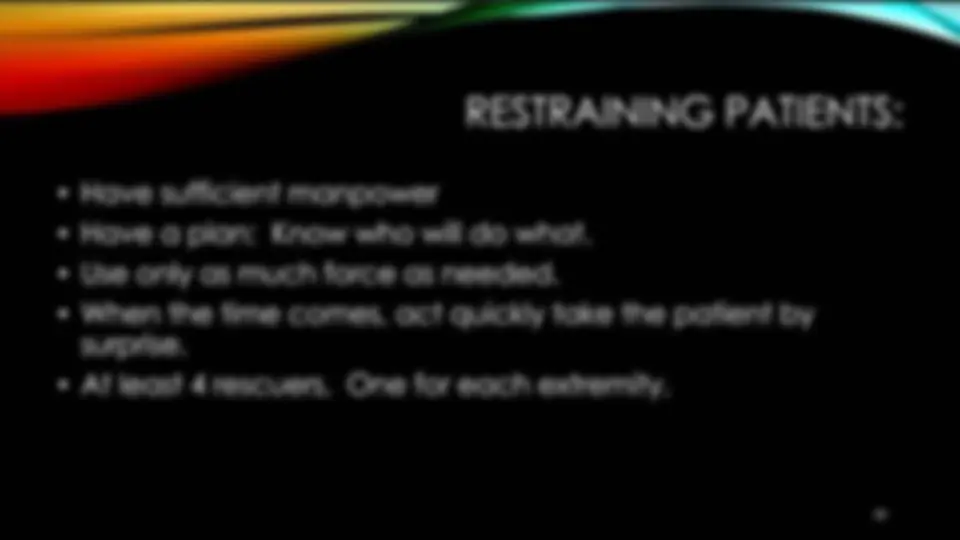
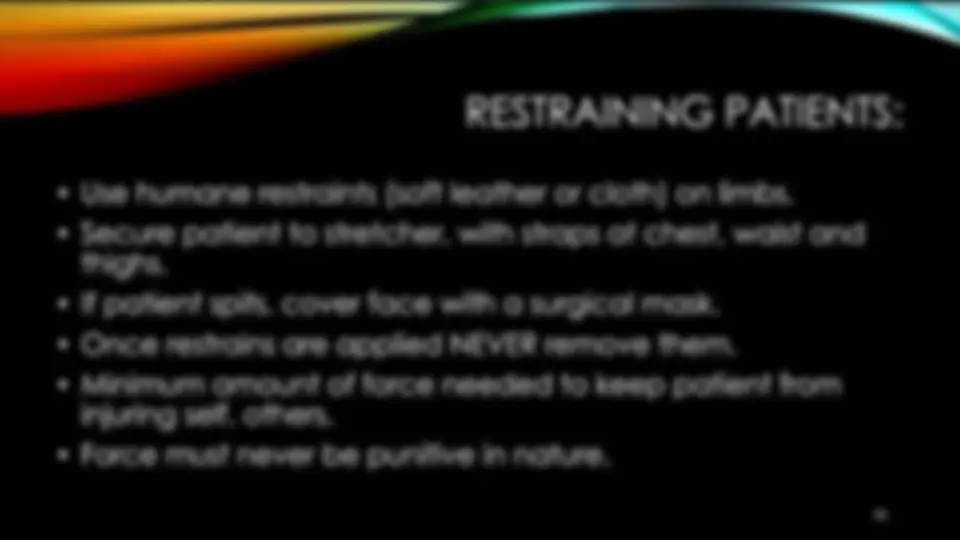
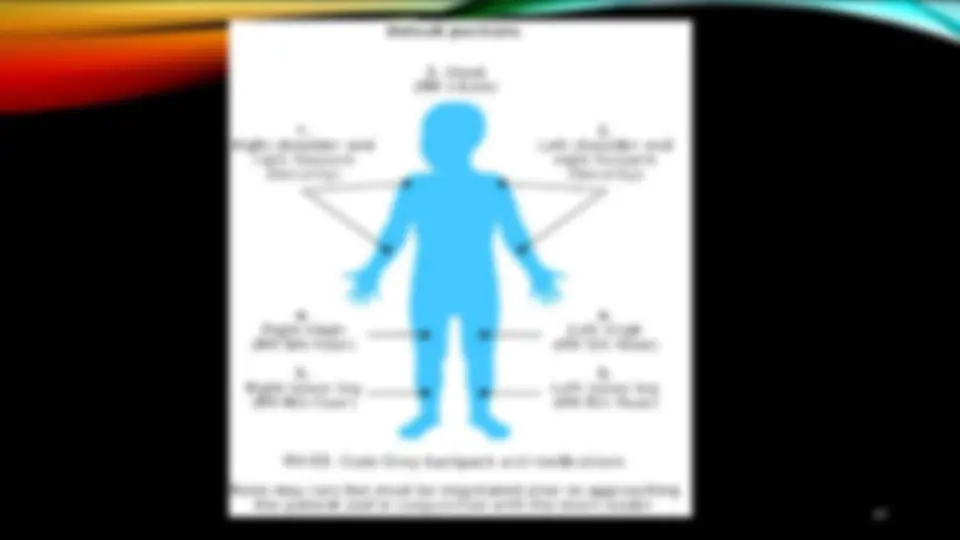
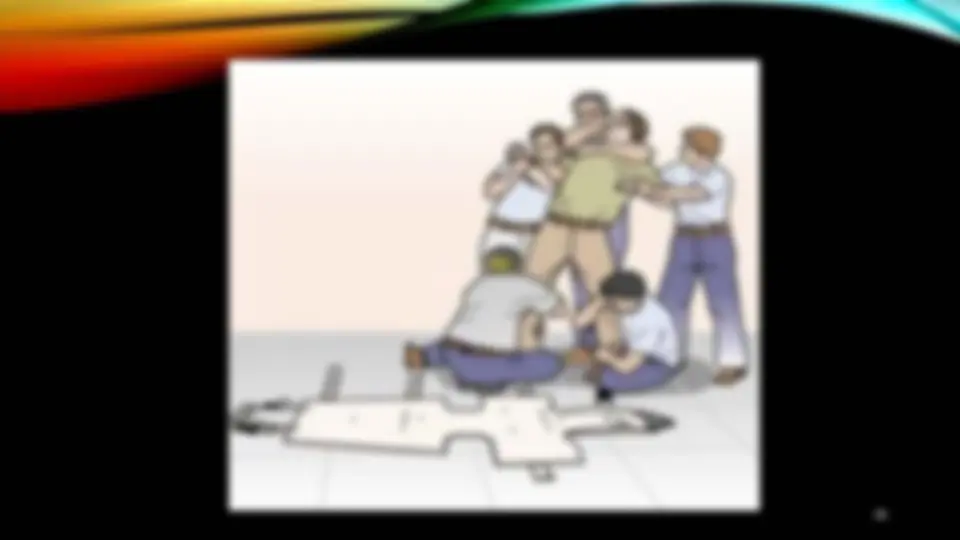
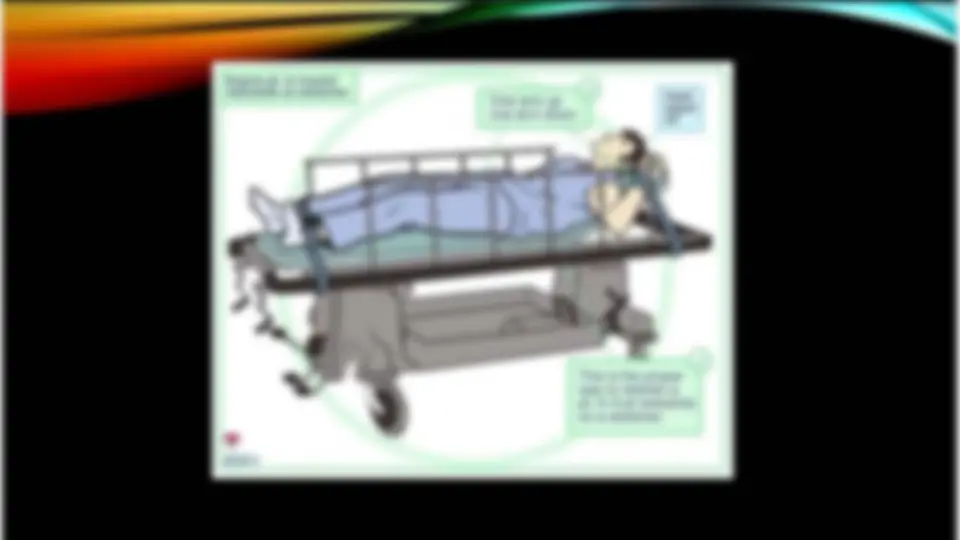



Study with the several resources on Docsity

Earn points by helping other students or get them with a premium plan


Prepare for your exams
Study with the several resources on Docsity

Earn points to download
Earn points by helping other students or get them with a premium plan
Community
Ask the community for help and clear up your study doubts
Discover the best universities in your country according to Docsity users
Free resources
Download our free guides on studying techniques, anxiety management strategies, and thesis advice from Docsity tutors
Information on psychiatric emergencies, including epidemiology, general strategies in evaluating patients, minor psychiatric emergencies, suicide, violence, assessing and predicting violent behavior, dealing with psychiatric patients, assessment of suicidal and violent patients, and restraining patients. It also includes risk factors for suicide and violence, causes of violence, and techniques for dealing with psychiatric patients. The document emphasizes the importance of self-protection, knowing about the patient before meeting them, and attending to the safety of the physical surroundings.
Typology: Study Guides, Projects, Research
1 / 50

This page cannot be seen from the preview
Don't miss anything!











































: ~.
which immediate therapeutic intervention Is
necessary.
others.
¢ Patients behavior is disturbing to himself, his family or his community.
¢ Patient initiated threat of harm to self, health care personnel or others in the patients sohere of influence.
———_— ss EPIDEMIOLOGY ¢ER facilities are equally used by males and females ¢ 30% are suicidal ¢ 10% are violent ¢most common diagnosis mood disorders, schizophrenia, alcohol and substance dependence ¢ 40% require hospitalization «Most visits are at night
ee
een
GENERAL STRATEGY IN EVALUATING PATIENTS
«Prevent harm Cos Amol Al OA e AO mel (er(e[= ¢ Prevent violence to others
¢ Approach in a non threatening manner
testing.
SS — (^) GENERAL (^) STRATEGY (^) IN
¢Inform the patient that restraint or seclusion will be Used if necessary ¢Have team ready for restraints ¢ Monitor closely once restrained ¢Rule out cognitive disorders caused by a general medical condition ¢Rule out impending psychosis
ee
e
¢ NEVER assume that a patient has a psychiatric illness Until all Possible Causes are ruled Out.
Sudden onset Visual, but not auditory hallucinations Memory loss, impairment Altered pupil size, symmetry, reactivity Excessive salivation Incontinence Unusual breath odors
CLUES SUGGESTING PHYSICAL CAUSES:
ms)
— eS
Identify yourself and your role Speak slowly and clearly ¢ Use acalm, reassuring tone Show you are listening to the patient by rephrasing back parts of what s/he says Do not be judgmental. Show compassion Use positive body language Acknowledge the patient's feelings Do not enter the patient’s soace, stay about 3° away Be alert for changes in the patient's emotional status 14
— eS
S10] (G/B) =
Suicide attempt is any willful act designated to end one's own life.
Derived from Latin for “self-murder’”
Fatal act that presents the person’s wish to die
Range from thinking about if and acting on it
16
Table 19.1= Terms Comprising Suicidal Ideation and Behavior
Aborted suicide attempt: Potentially self-injurious behavior with explicit or implicit evidence that the person intended to die but stopped the attempt before physical damage occurred Deliberate self-harm: Willful self-inflicting of painful, destructive, or injurious acts without intent to die. Lethality of suicidal behavior: Objective danger to life associated with a suicide method or action. Note that lethality is distinct from and may not always coincide with an individual's expectation of what is medically dangerous. Suicidal ideation: Thought of serving as the agent of one’s own death; seriousness may vary depending on the specificity of suicidal plans and the degree of suicidal intent Suicidal intent: Subjective expectation and desire for a self-destructive act to end in death. Suicide attempt: Self-injurious behavior with a nonfatal outcome accompanied by explicit or implicit evidence that the person intended to die. Suicide: Self-inflicted death with explicit or implicit evidence that the person intended to die.
SUICIDE:
= SUICIDE:
¢ Men > 40 years old
Drug, alcohol abuse history Severe depression
Previous attempts
20